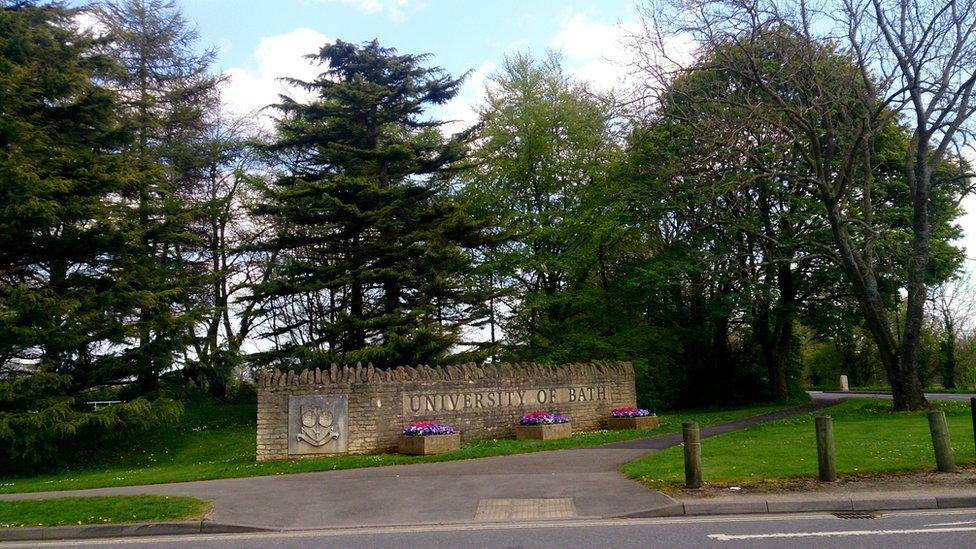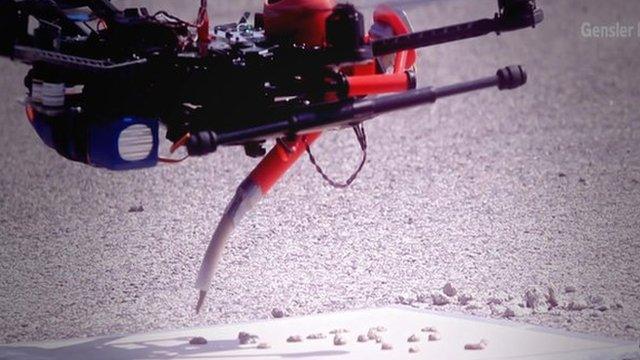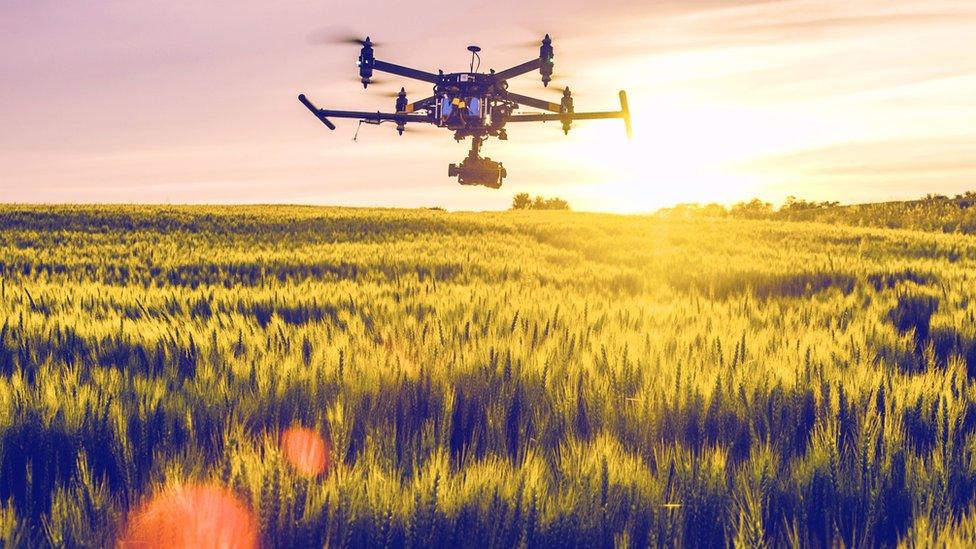Flying 3D printer drones work like bees to fix buildings
- Published

The project was carried out by a team in Bath, led by Imperial College London
A fleet of flying 3D printers has been designed to build and repair structures in-flight.
The drones use building methods similar to bees and wasps and were developed by a team at the University of Bath.
They could be used in manufacturing and construction in difficult-to-access places like on top of tall buildings, or dangerous locations to help with post-disaster relief construction.
The inventors say they could also cut costs and make construction safer.
3D printing has been gaining popularity in the construction industry and project investigator, Dr Richard Ball, said the new materials made use of unique properties needed for "aerial additive manufacturing".
These include being light-weight and quick-setting.

The research has been detailed in the science journal Nature
The drones in the fleet, known collectively as Aerial Additive Manufacturing (Aerial-AM), work jointly from a single blueprint, adapting their techniques as they go.
Although they are "fully autonomous" while flying, they are monitored by a person who checks their progress and can intervene if needed, to make decisions based on the information provided by the drones.
The work was published in science journal Nature.
Lead author Professor Mirko Kovac said his team had proven that drones can work independently and together to "construct and repair buildings, at least in the lab".
To prove the concept, researchers tested four cement-like mixtures for the drones to build with.
'Validate our solutions'
The drones assessed the printed geometry throughout the build in real-time and adapted their behaviour to meet the build specifications.
Researchers recorded the manufacturing accuracy as being to within "five millimetres".
They said the performance of the printed structure had to be accurately predicted to ensure "mechanical integrity through the printing process".
The proof-of-concept prints included a 2.05-metre (6.7ft) high cylinder (72 layers) with a polyurethane-based foam material, and an 18-centimetre (7ins) high cylinder (28 layers) with a custom designed structural cement-like material.
Dr Paul Shepherd, another project investigator, said the next step would be to work with construction companies to "validate our solutions and provide repair and construction capabilities".
Professor Kovac, director of the Aerial Robotics Laboratory at Imperial College London, who led the project, said they believed the fleet of drones could help reduce the cost and risk of construction in the future "compared to traditional manual methods".

Follow BBC West on Facebook, external, Twitter, external and Instagram, external. Send your story ideas to: bristol@bbc.co.uk , external
Related topics
- Published22 April 2015

- Published18 July 2022
